Digital Poster
Advances in Parkinson’s Disease Research
ISMRM & ISMRT Annual Meeting & Exhibition • 10-15 May 2025 • Honolulu, Hawai'i

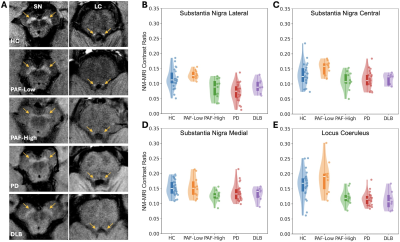 |
Computer Number: 97
4523. Neuromelanin-Sensitive
MRI as Biomarker of Phenoconversion from Pure Autonomic Failure
to Central Synucleinopathies
P. Trujillo, K. O’Rourke, O. Roman, A. Song, K. Hett, B.
Black, M. Donahue, C. Shibao, I. Biaggioni, D. Claassen
Vanderbilt University Medical Center, Nashville, United States
Impact: This study highlights the potential of
neuromelanin-sensitive MRI as an early biomarker for
neurodegenerative changes in high-risk PAF patients, aiding
in the timely detection and intervention for central
synucleinopathies, such as Parkinson disease.
|
|
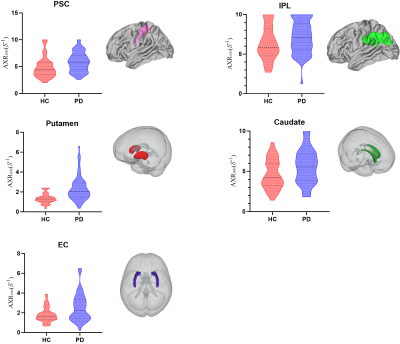 |
Computer Number: 98
4524. Deciphering
Blood-Brain Barrier Integrity in Parkinson’s Disease: A VEXI MRI
Investigation
Y. Shen, K. Ding, Y. Bai, Z. Li, Y. Zhang, D. Shi, Y. Ge, X.
Zhang, R. Bai, M. Wang
Zhengzhou University People's Hospital & Henan Provincial People's Hospital, Zhengzhou, China
Impact: This study positions VEXI MRI as a valuable tool
for non-invasively mapping regional BBB changes in PD,
enhancing understanding BBB alterations related BBB and
supporting the more precise disease monitoring and
intervention.
|
|
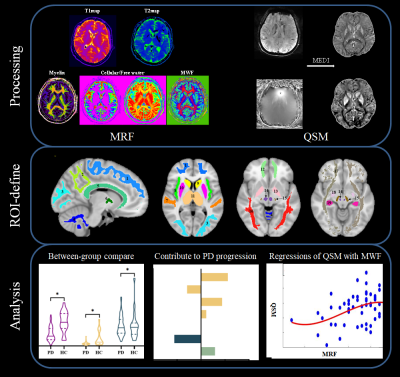 |
Computer Number: 99
4525. Quantifying
Myelin Content and Iron Deposition Patterns in Parkinson's
Disease Progression
X. Li, S. Bu, Y. Jiang, G. Fan
the first hospital of China medical University, ShenYang, China
Impact: This study lays crucial groundwork for
understanding the roles of myelin breakdown and iron
accumulation in PD progression, potentially guiding the
development of new imaging biomarkers to monitor disease
progression and evaluate therapeutic strategies.
|
|
 |
Computer Number: 100
4526. Quantifying
Iron, Protein Deposits, and Myelin Integrity in Parkinson’s
Disease and Multiple System Atrophy
J. Wen, J. Chen, X. Guan, X. Duanmu, J. Qin, Z. Zhu, W.
Yuan, Q. Zheng, C. Zhou, H. Wu, T. Guo, C. Wu, Y. Zhang, M.
Zhang, C. Liu, X. Xu
The Second Affiliated Hospital, Zhejiang University School of Medicine, Hangzhou, China
Impact: This study clarifies distinct neurodegenerative
patterns in PD and MSA, highlighting specific iron and
protein deposition and myelin integrity alterations,
potentially aiding targeted diagnostics and treatments of
synucleinopathies.
|
|
 |
Computer Number: 101
4527. Altered
Brain Glymphatic System Impairment in Early Parkinson’s Disease
and Atypical Parkinsonism
Y. Chen, Y. Zhao, M. Zhuo, X. Yue, G. Wang
Shandong Provincial Hospital Affiliated to Shandong First Medical University, Jinan, China
Impact:
Impaired glymphatic function might be a pathophysiology marker of neurodegeneration disorders. Although the dispersion of ChP implies that this may not be a stabilizing factor, impaired glymphatic hydrodynamic function also support for glymphatic dysfunction in the proteopathy of parkinsonism. |
|
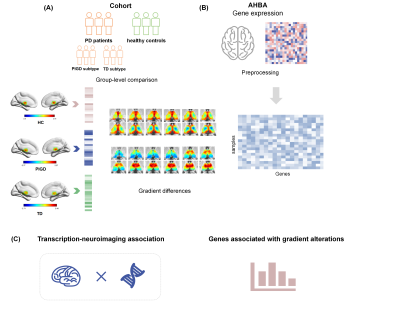 |
Computer Number: 102
4528. Macroscale
Thalamus Functional Organization Disturbances and its Underlying
genetic architecture in Parkinson’s disease motor subtypes
S. Bu, H. Pang, X. Li, M. Zhao, J. Wang, Y. Jiang, G. Fan
the First hospital of China Medical University, Shenyang,Liaoning, China
Impact: This study explored the functional architecture
patterns of thalamus in different Parkinson's disease motor
subtypes, and further explored the genes associated with
thalamic gradient alterations.
|
|
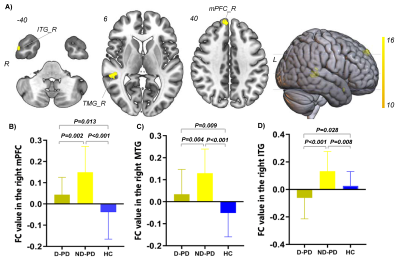 |
Computer Number: 103
4529. Abnormalities
in the BNST-Cortex Circuit and Lymphocyte Function in
Parkinson's Disease with Depression: An fMRI and DTI-ALPS Study
Y. Zhang, B. Liu, K. Deng, P. Wu
The Second Affiliated Hospital of Guangzhou University of Chinese Medicine, Guangzhou, China
Impact: These findings provide valuable insights into
the neurobiological mechanisms of PDD and hold important
clinical implications for the early identification of
depression in Parkinson's disease patients.
|
|
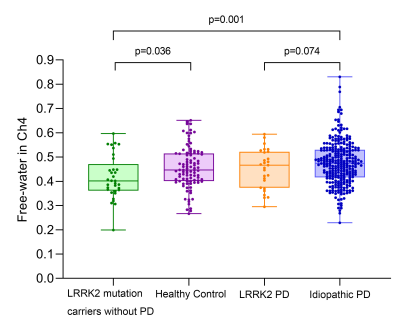 |
Computer Number: 104
4530. LRRK2
mutation contributes to decreased free water in the nucleus
basalis of Meynert in manifest and premanifest Parkinson’s
disease
C. Wang, S. Wang, C. Zhou, P. Huang
The Second Affiliated Hospital, Zhejiang University School of Medicine, Hangzhou, China
Impact: This finding suggests early and sustained
attempts to compensate for LRRK2-related dysfunction.
Free-water imaging has the potential to be applied as a
non-radiative imaging technique to identify asymptomatic
LRRK2 mutation carriers.
|
|
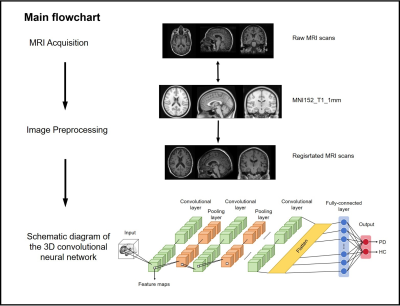 |
Computer Number: 105
4531. Interpretable
neural network based on T1-weighted MRI for detecting
Parkinson's disease
C. Y. Cao, L. Han, Z. Z. Jia
Affiliated Hospital of Nantong University, Nantong 226001, China
Impact: CNN based on T1-weighted imaging is a reliable
and accurate diagnostic tool for detecting PD. Interpretable
maps improve the explainability of classification results in
clinical applications.
|
|
 |
Computer Number: 106
4532. Brain
iron Deposition and Mitochondrial Dysfunction in Early-Stage
Parkinson’s Disease
Q. Yu, N. He, J. Weng, P. Wu, B. Zhang, W. Dai, Y. Zhang, F.
Yan
Ruijin Hospital, Shanghai Jiao Tong University School of Medicine, Shanghai, China
Impact: Mitochondrial dysfunction may precede brain iron
deposition in PD, and has the potential to serve as a
critical early indicator.
|
|
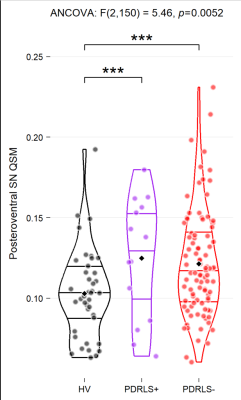 |
Computer Number: 107
4533. Genetic
Influences on Restless Legs Syndrome Associated with Early
Parkinson’s Disease: A Four-Year Longitudinal Quantitative
Imaging Study
R. Gaurav, PhD, F-X Lejeune, PhD, A. Lanore, MD, M. Santin,
PhD, R. Valabrègue, PhD, N. Pyatigorskaya, MD, PhD, P.
Dodet, MD, G. Mangone, MD, PhD, M. Vidailhet, MD, J-C
Corvol, MD, PhD, I. Arnulf, MD, PhD, S. Lehéricy, MD, PhD
Sorbonne University, Paris Brain Institute (ICM), Paris, France
Impact: This study demonstrated that PD patients without
RLS symptoms exhibit increased longitudinal nigral iron
levels, which are correlated with the neuromelanin
depigmentation. Our observations indicated an association
between genetic predisposition and elevated MRI-derived
nigral iron levels.
|
|
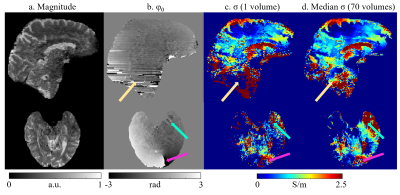 |
Computer Number: 108
4534. Removing
Open-Ended Fringe Lines Facilitates Brain Phase-Based Electrical
Properties Tomography in Parkinson’s Disease
O. Arsenov, J. Luo, G. Thomas, R. Weil, K. Shmueli
University College London, London, United Kingdom
Impact: Phase-based EPT was calculated in a Parkinson’s
disease study by removing areas affected by open-ended
fringe lines. We showed that conductivity mapping is
feasible even when open-ended fringe lines are present,
which will facilitate clinical applications of EPT.
|
|
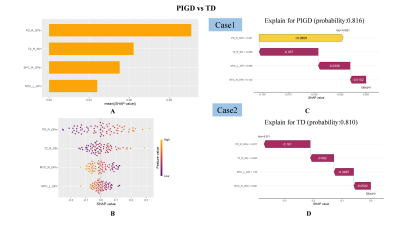 |
Computer Number: 109
4535. Quantitative
relaxation parameters of subcortical nuclei based on SyMRI can
help identify different motor subtypes of Parkinson's disease
D. Cheng, J. Wen, Y. Liu, N. Ding, Z. Duan, Y. Yang, Y. Wu,
H. Wang, J. Ma, J. Zhang, Z. Xu, H. Zhao, G. Wen
The First People’s Hospital of Foshan, Foshan, China
Impact: SyMRI can detect microscopic brain damage across
PD subtypes, with specific relaxation parameters offering
potential as neuroimaging biomarkers to distinguish
difference subtype of PD.
|
|
 |
Computer Number: 110
4536. Identifying
Brain Degeneration Patterns in Early-Stage Parkinson's Disease:
A Multimodal MRI Study
Z. ZHU, J. Wen, Q. Zheng, W. Yuan, X. Duanmu, J. Qin, C.
Zhou, T. Guo, Y. Zhang, M. Zhang, X. Guan, X. Xu
Joint Laboratory of Clinical Radiology, the Second Affiliated Hospital, Zhejiang University School of Medicine, Hangzhou, China, Hangzhou city, Zhejiang province, China
Impact: This classification strategy showed potential
stratification capabilities of multimodal MRI at early
disease stages, and offered new insights into early
neurodegenerative heterogeneities and clinical relevance in
PD patients.
|
|
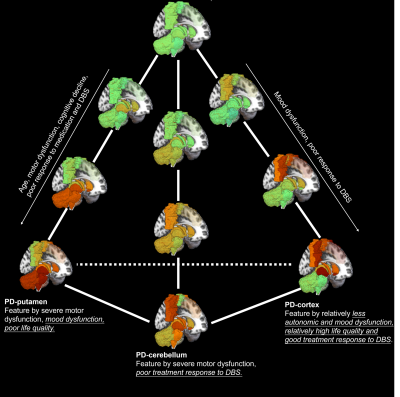 |
Computer Number: 111
4537. Defining
Brain Atrophy Subtypes in Parkinson's Disease with Distinct
Therapeutic Effects of Deep Brain Stimulation
Z. Zhuo, Y. Bai, T. Hua, X. Zhang, Y. Liu
Beijing Tiantan Hospital, Capital Medical University, Beijing, China
Impact: The novel PD imaging subtypes can aid clinical
decision-making regarding the optimal subtype and timing for
DBS therapy.
|
|
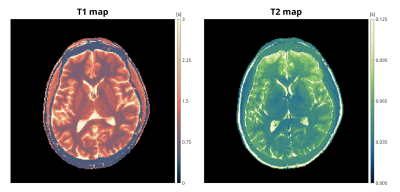 |
Computer Number: 112
4538. Detecting
dopaminergic degeneration in clinically uncertain parkinsonian
syndrome patients using fast MR-STAT relaxometry
M. Schilder, E. Wallert, S. Mandija, O. van der Heide, H.
Liu, M. Fuderer, J. Booij, R. de Bie, M. Beudel, H. Berendse,
T. van Mierlo, J. Blankevoort, C. van den Berg, E. van de
Giessen, A. Sbrizzi
University Medical Center Utrecht, Utrecht, Netherlands
Impact: Our results demonstrate that MR-STAT detects
differences in T1-/T2-values between neurodegenerative
versus non-neurodegenerative parkinsonism patients in a fast
and inexpensive way, therewith showing potential as easily
accessible tool for detecting neuropathological changes in
neurodegenerative parkinsonism with potential diagnostic
application.
|
The International Society for Magnetic Resonance in Medicine is accredited by the Accreditation Council for Continuing Medical Education to provide continuing medical education for physicians.